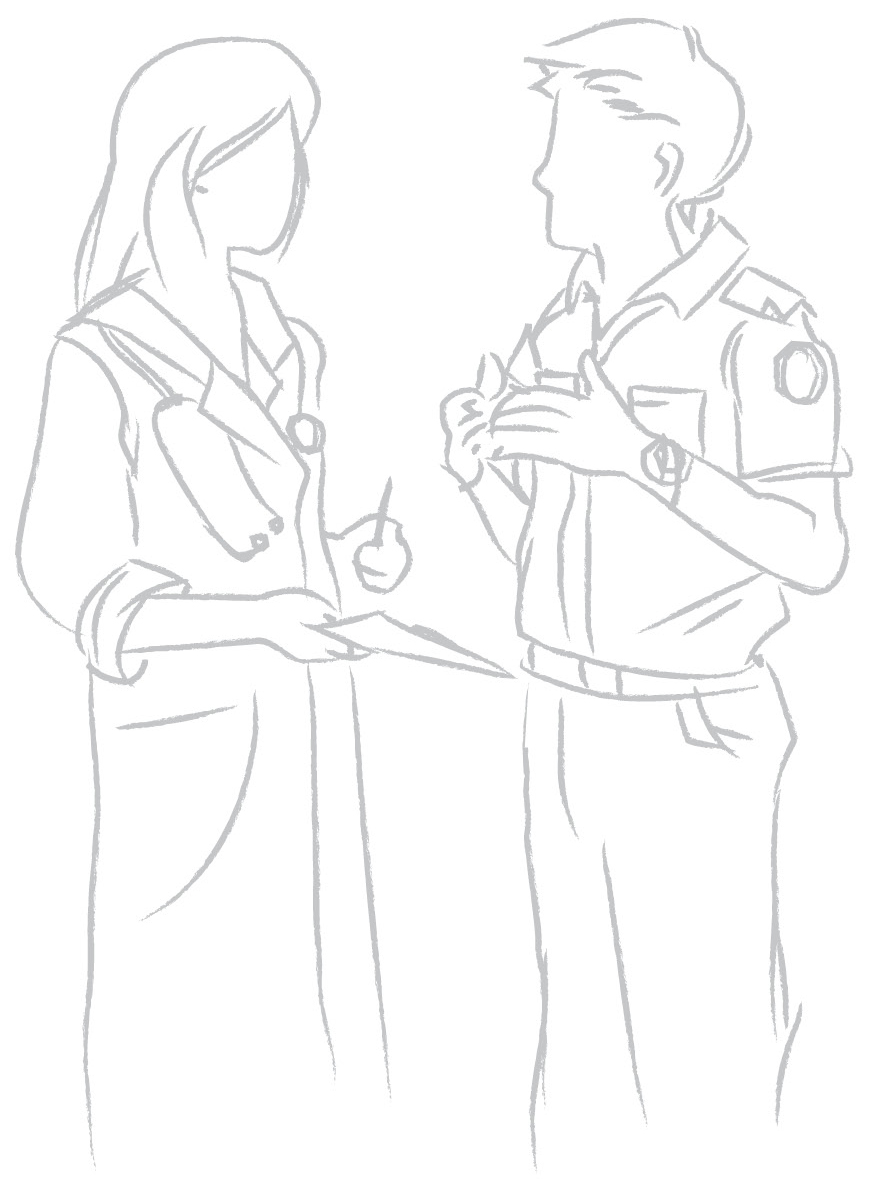
What will it mean to go Beyond the Call a generation from now?
EMS Agenda 2050, an initiative to unite the EMS community and develop a vision for the profession, proposes a people-centered EMS system—one that “serves as the front line of a region’s healthcare system and plays a core role in supporting the well-being of community residents and visitors.” When 2050 arrives, many things we consider above and beyond the call today will simply be part of what every EMS system and clinician does on an everyday basis. Here are just a few examples taken from the pages of EMS Agenda 2050.
1) Emergency notifications go well beyond the 911 call, to include information sharing and real-time monitoring linking the patient with multiple resources.
Carla’s grandmother finds her granddaughter lying on the grass, pale and gasping for air. Carla’s earring beeps and then a voice comes out of the tiny speaker. “Carla, Hi, it’s Abdi, a telemedic at the Medical Communication Center. We received an alert that there might be a problem. Are you feeling OK?”
2) Medical professionals and laypeople go beyond the call by serving as part of a comprehensive emergency medical system that takes advantage of nearby resources to provide the most effective and efficient response.
Carla’s grandmother recognizes one of her neighbors as he walks around the corner of the house to the backyard. A retired respiratory therapist, he is a registered community medical volunteer and received a notification at home that a serious medical emergency was occurring nearby. Carla’s grandmother waves him over, just as an emergency medical kit drone lands safely a few yards away. She feels her heart pounding in her chest as she watches her neighbor talk to Abdi and quickly access the medication administrator from the drone.
3) EMS systems go beyond the call by integrating with other information systems and using advanced technologies to help clinicians provide the best care.
The dispatch system notifies Jana and her partner, Chip, that they are responding to a call for a sick child. The screen on the wall displays information about their new patient. Jana begins reading about Carla’s medical history and sees her current vital signs. Based on information collected on the scene, the AIM—artificial intelligence medic—states that there is an 82 percent probability the patient is experiencing anaphylaxis.
4) EMS clinicians go beyond the call by working together with other medical providers and with patients and their families to provide patients evidence-based care but also keep them comfortable and ensure they are linked to the care they need to prevent future emergencies.
Jana asks for a connection to the EMS physician on call. The physician talks to Carla and her grandmother, reviews the assessment findings, and asks the paramedics what they think. They agree that leaving Carla at home with her grandmother is the best plan. Carla breathes a sigh of relief and smiles, squeezing her grandmother’s hand. “If it’s OK with you, our telemedics will be monitoring your granddaughter and will call to check in shortly,” Jana says. “You should get a notification later today about scheduling a visit with an allergist, and the complete report will be available in just a few minutes in Carla’s health portal.”
The EMS system a generation right now might not look exactly like these scenarios, but if we follow the path and principles described in EMS Agenda 2050, a truly people-centered system is possible. It will take commitment from every EMS professional and our partners—including you.
Visit ems.gov to read EMS Agenda 2050 and find a way for you and your system to go beyond the call and start paving the way toward a people-centered system. The future starts now.
